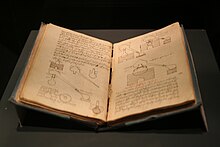Vakhtang VI
| Vakhtang VI | |
|---|---|
Roman Catholic, Islam | |
| Khelrtva |  |
Vakhtang VI (
As a regent
Son of Prince
During the years of captivity, Vakhtang requested aid from the Christian monarchs of
His reign
Vakhtang remained seven years in Persia before he was permitted to return to his kingdom in 1719. He was sent back with the task to put an end to the continual raids by north Caucasian mountain tribes, particularly the
At this time,
In September, Vakhtang VI encamped at
In these invasions by Turkey, Persia, Dagestanis and Afghans, three-fourths of the population of Georgia was destroyed[dubious ]. Vakhtang, after having wandered a long time in the mountains with his most faithful adherents, again sought protection from Peter, who invited him to Russia. Accompanied by his family, his close comrades-in-arms, and a retinue of 1,200, he made his way across the Caucasus to Russia in July 1724. Peter had just died, and his successor, Catherine I gave no real help but allowed Vakhtang to settle in Russia, granting him a pension and some estates.
Vakhtang resided in Russia till 1734, but in that year he resolved to try to recover his dominions by the co-operation of the Shah of Persia. Tsarina Anna consented to Vakhtang's project, but gave him instructions how to act in Persia, and in what manner he should induce the Georgians and Caucasian highlanders to become Russian vassals, and bring about their entire submission to Russia. Vakhtang started on his diplomatic journey, in company with a Russian general, but fell ill on his way, and died at Astrakhan on 26 March 1737. He was buried at the city's Church of Assumption. Many of his followers remained in Russia, and later served in the Russian army. A descendant, Pyotr Bagration, was perhaps the most famous of them. A grandson of one of the exiles was Pavel Tsitsianov who became the Russian governor of newly annexed Georgia in 1802.
Scholarly and cultural activities



Although Vakhtang's political decisions have sometimes been object of criticism, his scholarly and cultural activities are the crowning merits of his reign. He was, indeed, one of the most learned monarchs of the time. He was an author and organiser of numerous cultural and educational projects aimed at reviving the country's intellectual life. It was him who, with the help of Anthim the Iberian and Mihai Iștvanovici of Wallachia, established, in 1709, the first printing press in Georgia and the whole Caucasus. Among the books published in "Vakhtang's Printing Press" in Tbilisi was the 12th-century national epic poem The Knight in the Panther's Skin (Vep’khistkaosani) by Shota Rustaveli, accompanied by scholarly commentaries by the king himself. This induced a new wave of interest towards that great medieval poet and would influence a new generation of Georgian poets of the 18th century, which is generally regarded as the Renaissance of the Georgian literature.
He also undertook the printing of the
An eminent critic and translator, Vakhtang himself was an author of several patriotic and romantic lyric poems. He is known to have translated an ancient collection of fables
Reburial and portrait fallacy
In July 2013, Georgia raised the possibility to move Vakhtang's remains to Georgia for reburial.[7]
Family
Vakhtang married in Imereti, western Georgia, in 1696, a Circassian princess Rusudan (died in Moscow, 30 December 1740). They were the parents of:
- Princess Tamar (1696–1746) who married, in 1712, Prince Teimuraz, the future king of Kakheti and Kartli.
- Princess Anna (Anuka) (1698–1746), who married, in 1712, Prince Vakhushti Abashidze.
- Princess Tuta (1699–1746), who married the Imeretian nobleman of the ducal family of Racha, Gedevan, Duke of the Lowlands.
- Prince Bakar(7 April 1700 – 1 February 1750), ruler of Kartli.
- Prince George(2 August 1712 – 19 December 1786), general of the Russian Empire.
Vakhtang had also several extramarital children, including:
- Prince Rostom (died 1689, buried in Tiri monastery)
- Prince Vakhushti
- Prince Paata
- Princess Elene
- Princess Mariam
References
- ^ Fisher et al. 1991, p. 328.
- ^ a b c d e Matthee 2012, p. 225.
- ^ Ვახტანგ VI. Საქართველოს ილუსტრირებული ისტორია. პალიტრა L. 2015. Archived from the original on 24 October 2021. Retrieved 22 April 2019.
- ^ "ATSU.EDU.GE". atsu.edu.ge. Retrieved 1 August 2023.
- ^ Dakabadonebuli Qilila da damana iliauni.edu.ge
- ^ Kalandia, G. (February, 2021) არსებითი უზუსტობა ვახტანგ VI-ის პორტრეტთან დაკავშირებით (A substantial inaccuracy regarding the portrait of Vakhtang VI) Istoriani, Palitra Publishing, Tbilisi, pp. 40-45
- ^ Georgian patriarch to arrive in Moscow. Retrieved 2 August 2013.
Sources
- Floor, Willem M. (2008). Titles and Emoluments in Safavid Iran: A Third Manual of Safavid Administration, by Mirza Naqi Nasiri. Washington, DC: Mage Publishers. p. 287. ISBN 978-1933823232.
- Fisher, William Bayne; Avery, P.; Hambly, G. R. G; Melville, C. (1991). The Cambridge History of Iran. Vol. 7. Cambridge: ISBN 0521200954.
- Matthee, Rudi (2012). Persia in Crisis: Safavid Decline and the Fall of Isfahan. I.B.Tauris. ISBN 978-1845117450.
- The Cambridge History of Iran: Volume 6, the Timurid and Safavid Periods, edited by Peter Jackson, Stanley I Grossman, Laurence Lockhart: Reissue edition (1986), Cambridge University Press, ISBN 0-521-20094-6, page 318.
- (in English) Iranian-Georgian Relations in the 16th- 19th Centuries Archived 14 November 2007 at the Wayback Machine in Encyclopædia Iranica.
- ISBN 0-253-20915-3, page 54.
- This article incorporates text from the Penny Cyclopædia of the Society for the Diffusion of Useful Knowledge, a publication now in the public domain.


